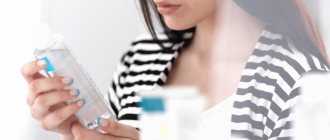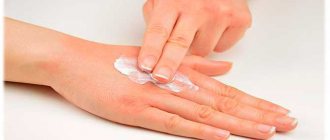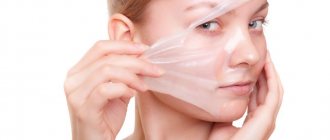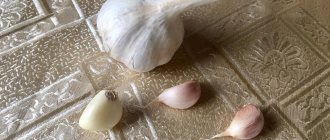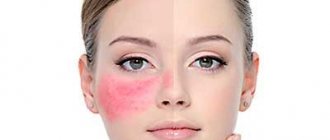Updated: 05/25/2021 18:43:59
Expert: Arefieva Elizaveta Aleksandrovna
Problem skin is considered to be oily epidermis with enlarged pores. However, this is only partly true. In fact, even combination and dry skin can be uncomfortable and require special care. In particular, we are talking about the thin, depleted epidermis on the face.
To fix the problem, you need to study it in as much detail as possible. This will help you properly organize the care process and choose the best options for cosmetics.
Photo: dryskintips.org/
Pros and cons of thin skin on the face
The main reasons for thinning skin are age-related changes, unfavorable heredity and dehydration. And if it is impossible to get rid of the first two provoking factors, then the loss of moisture from the epidermal cells can be eliminated.
The main disadvantages of thin leather are:
- high sensitivity to external factors;
- pallor resulting from a lack of melanin;
- tendency to rapid loss of elasticity due to a lack of fat in their thickness;
- with an incorrect lifestyle, the owner of a thin epidermis may notice the appearance of hyperemia or swelling on the surface of the face;
- tendency to peeling and irritation;
- a feeling of tightness after washing.
In its structure, the thin skin of the face is as close as possible to the epidermis around the eyes, so care for these areas is the same. Therefore, you can use the same cosmetics.
Surprisingly, thin facial epidermis has some advantages
. It is not prone to acne and oily sheen; there are no blackheads or areas with enlarged pores on its surface. However, this is not a reason to refuse careful care of thin skin.
Effective cosmetics and useful procedures
To ensure that thin skin brings as little trouble as possible, and that caring for it does not take much time, you should learn to choose the right cosmetics. It doesn’t hurt to carry out salon or home care treatments from time to time.
How to choose the right cosmetics?
First of all, you should carefully read the ingredients on the label. For thin skin, cosmetics that contain at least one of the following ingredients will be useful:
- allantoin (works for rapid regeneration of the facial surface);
- tocopherol (prevents dehydration and early skin aging);
- hyaluronic acid (nourishes and moisturizes cells);
- retinol (this is vitamin A in liquid form, which makes the dermis elastic);
- ascorbic acid (vitamin C prevents the appearance of rashes and redness);
- oils and plant extracts (nourish the skin, reduce dryness and flaking).
Products with the maximum amount of natural ingredients in the composition, without parabens and other harmful substances, have the best effect on thin skin.
Useful salon treatments
If finances and time allow, full-fledged care for thin skin can be carried out in a cosmetologist’s office:
- phototherapy (IPL) removes veins and spider veins on the face.
The process follows a simple scheme: a cosmetologist uses a special device to apply it over the entire surface of a previously cleaned face, and then fixes the result with a nourishing composition. The procedure is virtually painless, effective and has few side effects.
- biorevitalization replenishes the required amount of moisture in the epidermis.
The procedure rejuvenates the skin, gives an anti-inflammatory effect and strengthens blood vessels. The process is very painful - a solution of hyaluronic acid is injected into small syringes, and then, through a needle, the medicine is sent into the deep layers of the skin. Within 1-2 days, small marks from the injections remain on the face, but after they disappear, the effect is amazing - the skin is firmer, moisturized and looks healthy.
- microcurrent therapy enhances the immunity of the dermis.
In the process, the cosmetologist directs barely noticeable current discharges to the face with a special device, and then applies a special medicinal composition to the skin. The procedure is painless and especially effective for sagging skin.
Procedures at home
Thin skin requires constant care, which can be easily organized at home. It can be:
- natural masks;
- compresses.
The most effective masks are made from ingredients that can be easily found at any housewife.
- Mask with starch.
Mix 30-40 g of potato starch with two teaspoons of cream, let it brew for 30 minutes. Then add vitamin E in the form of oil, put the mixture in the refrigerator for 2.5-3 hours. Store the mask for no more than 3 days, apply daily for 30-40 minutes.
- Cucumber juice mask.
Mix 50 ml of juice with 1 egg white, add a teaspoon of almond oil and 10 ml of retinol or tocopherol, and then sprinkle the mixture with flour. The composition cannot be stored for a long time. Apply the mask once every three days for 30 minutes.
- Light mask with avocado.
Peel the avocado and puree it by hand or in a blender. Add 10 ml olive oil (extra virgin). Store the mask in the refrigerator for no more than 3 days. It can be applied to the face daily for 20-25 minutes.
- Mask made of flour and parsley.
Dilute 10 grams of flour (preferably potato flour) with 20 ml of olive oil. The composition is designed for one use; it is better not to store it even in the refrigerator. Keep on face for no more than 20 minutes.
A compress made from cornflower blue flowers is also considered effective. To prepare the solution, mix at least 20 grams of dried flowers with 100 ml of heated vegetable oil (almond or olive). A fabric mask is soaked in the mixture and applied to the face for 20 minutes.
Features of thin facial skin
The thinned facial epidermis has its own characteristics that are characteristic only of it. They need to be known and taken into account in order to ensure proper care of problem areas. Main features of thin skin:
- absence of unnatural shine and greasy film;
- velvety and matte;
- absolutely smooth surface without areas with enlarged pores;
- tightness, excessive dryness and tendency to frequent peeling;
- frequent hyperemia due to capillaries located close to the surface of the epidermis;
- pallor;
- tendency to develop bruises under the eyes due to prominent veins.
Thin skin is easily irritated when exposed to negative external factors. They can be either cigarette smoke and cold air, or heat, and even the purchase of new cosmetics.
Oily skin - how to properly care for it
Thanks to the increased secretion of sebum, oily skin does not age for a long time. Wrinkles appear on it quite late. Another advantage is reduced sensitivity. Those with oily skin can more easily tolerate more aggressive cosmetic procedures, such as deep peels, without the risk of irritation.
The main problems that arise in owners of such skin are acne, increased oiliness, enlarged pores, and blackheads.
Pimples
Products for oily skin:
- Cleansers with glycolic and salicylic acid - reduce sebum production, remove acne and reduce pores.
- Cosmetic products with vitamin A - normalize the functioning of the sebaceous glands, improve the color and appearance of the face.
- Antioxidant serums – prevent aging.
- Light moisturizing creams and cosmetics with hyaluronic acid - moisturize without adding grease or clogging pores.
Recommended treatments for oily skin:
- Laser procedures have a bactericidal effect and prevent acne.
- Chemical peels – remove age spots, acne, and reduce sebum production.
- Cosmetic cleansing – eliminates acne, clogged pores, blackheads, which often form on such skin.
- Dysport/Botox fillers – remove wrinkles and dark circles under the eyes, making the oval of the face better defined.
Chemical peeling
Proper care will remove oily shine from the skin, tighten pores and avoid the appearance of acne.
Factors that harm thin facial skin
Photo: self.com/
No amount of care, even the most correct and thorough, can improve the condition of the thin epidermis unless the influence of certain negative factors on it is excluded. Most of all, problematic skin is harmed by:
- excess ultraviolet radiation;
- windy and frosty weather;
- temperature changes;
- hard tap water;
- incorrectly selected or low-quality cosmetics.
Unfortunately, some people with thin skin will have to give up excessive facial activity. This applies primarily to emotional individuals. With this nature, facial wrinkles may appear on the thinned facial epidermis by the age of 30.
Pale skin requires special attention and proper care
Light skin looks beautiful and aristocratic. It’s not for nothing that nobles used to strive with all their might to get such a complexion. However, it has disadvantages:
- Skin with this feature is very sensitive to the sun - it practically does not tan, but turns red. Sunburn is common.
- White-skinned people can react very violently to any cosmetic procedures. The solarium is also a risk area for them. It can cause unpleasant consequences, including burns.
- Since such skin lacks the pigment melanin, which protects it from sunlight, without proper care and use of sunscreen, wrinkles, freckles and age spots appear on it. Such people have an increased risk of developing skin cancer, including the most malignant - melanoma.
Cosmetic products for fair skin:
- Sunscreen. Protects against sunburn, cancer, freckles, age spots. Products with SPF 30 or higher are recommended.
- Antioxidants. Protects against the oxidative effects of the sun and the environment.
- Masks, lotions and other products containing vitamins and anti-inflammatory components. They cleanse the skin well and relieve inflammation.
Mask for pale skin
Ideal procedures:
- Laser. Pale skin is an ideal type for laser treatments from hair removal to non-surgical tightening. Thanks to its light tone, it responds well to the laser.
- Mesotherapy. Introducing vitamin cocktails into the skin improves its structure and nourishes it with useful substances.
- Chemical peeling. An excellent alternative to laser. Only soft surface options are recommended.
- Dysport / Botox and fillers (fillers). You can start using it early, as soon as the first age-related changes appear.
Proper care will turn such skin into jewelry and significantly reduce the risk of developing cancer.
General principles of care for thin skin
Dermatologists and cosmetologists emphasize that without proper care, thin facial skin will begin to intensively lose moisture, which it already lacks. Because of this, it will become even thinner, wrinkles will form on its surface, and it will become inflamed even with minor influences from the external environment.
To avoid unwanted consequences, you must follow these principles of care:
- use high quality cosmetics designed for sensitive skin;
- To remove makeup, use only special products, but in no case tap liquid;
- wash only with cosmetic milk or gentle gel, stopping the use of soap, which disrupts the pH of the skin and has drying and antibacterial properties;
- do not leave decorative cosmetics on your face all night;
- use day and night moisturizing and nourishing cream for very dry skin;
- once every 10 days you can use gommage, but not scrub or peeling;
- after 30 years, turn to the use of anti-aging skincare cosmetics;
- before going outside, apply sunscreen to your face;
- several times a week, make homemade face masks that have moisturizing and nourishing properties and do not contain alcohol or aggressive substances;
- for washing, use soft, cool, but not hot water, which must first be filtered;
- exclude the use of cosmetic ice and herbal infusions or decoctions;
- remove from the menu all foods that cause any negative changes in the skin of the face;
- limit the time spent in conditions of elevated temperatures;
- do not conduct aromatherapy sessions, especially using new or unknown oils or mixtures.
It is recommended to undergo a course of vitamin therapy annually. The complexes should contain ascorbic acid, retinol, tocopherol and cobalamin (vitamin B12).
Useful tips
In fact, the most important thing thin skin needs is sealing. To achieve this effect, you can:
- combine salon and home care;
- try to spend less time in the sun and use cosmetics with a high SPF level;
- Healthy food;
- Avoid staying in saunas, steam baths and generally steaming the skin.
Thin skin requires regular care, gentle handling and following simple recommendations.
To avoid problems with the dermis for as long as possible, you should set aside time daily for useful procedures and use only products approved for this skin type.
Rules for choosing cosmetics for thin skin: what is in the composition?
Proper care of problematic epidermis is impossible without the use of special cosmetics. But it is also necessary to select it taking into account certain rules, based on information about the composition. It must contain the following components:
- allantoin: relieves inflammation and irritation, accelerates the healing of wounds and cracks;
- hyaluronic acid: has moisturizing properties, improves the ability of skin cells to regenerate;
- vegetable oils (almond, jojoba, myrrh, etc.): moisturize, nourish, create a protective film on the surface of the skin;
- retinol: moisturizes, relieves irritation, inflammation, peeling, heals small cracks and wounds;
- ascorbic acid: stimulates collagen production, strengthens local immunity, makes capillary walls stronger;
- tocopherol: has antioxidant properties, rejuvenates, moisturizes.
Additionally, the composition of care products may include extracts of medicinal plants. They may have anti-inflammatory, soothing, regenerating and many other beneficial properties.
Skin atrophy
It is customary to distinguish between two ways of occurrence and development of skin atrophy: physiological and pathological. Physiological ones include aging and pregnancy; all other cases are the result of pathology. Skin aging begins with damage to cell membranes by free radicals - molecules with an unoccupied electron that are actively involved in various chemical reactions. Free radicals are the result of natural biochemical processes inside the human body, but they can also be formed under the influence of toxic substances (exhaust gases, cigarette smoke, contaminated products).
The “behavior” of these active elements is regulated by the body’s antioxidant system – a set of enzymatic and non-enzymatic mechanisms for inhibiting cell autoxidation. Normally, free radicals help a person cope with infections, improve blood clotting, and saturate cells with oxygen. However, with age, the number of free radicals increases critically; they cease to play a positive role and begin to destroy cells. This leads to intradermal cellular imbalance, degenerative processes in the skin with the development of areas of atrophy. Dermatologists believe that this process is aggravated by age-related disruption of the lipid barrier of the skin (caused by a decrease in estrogen levels, menopause), leading to destruction of the stratum corneum of the epidermis, destruction of structures capable of retaining moisture, which contributes to the development of atrophy.
Another mechanism for the formation of atrophic scars - striae - during pregnancy. One of the most significant reasons for their occurrence is considered to be a decrease in the ability of skin cells (fibroblasts) to synthesize collagen and elastin while maintaining the synthesis of enzymes that destroy this collagen and elastin. The skin loses its strength, the collagen and elastic fibers of the dermis tear, unable to withstand the constant overstretching of the skin by the growing fetus, while the epidermis retains its integrity. A defect is formed - an area where active fibroblasts flock to fill it with collagen and elastin. The stage of active scarring begins. Later, the activity of collagen and elastin production decreases, the connective tissue at the site of the “failure” becomes denser, compressing the lumen of the blood and lymphatic vessels inside the emerging scar. The nutrition and metabolism of this area of the dermis are disrupted, inflammation is replaced by dystrophy. This forms an irreversible skin defect - a stretch mark, or an atrophic scar.
Skin atrophy as a result of pathological processes depends on the characteristics of the disease of which it is a symptom. However, all types of skin atrophy resulting from pathology have common features. The point in this case is to reduce the volume of tissues that make up the skin. Some skin cells, for one reason or another, are destroyed and cease to perform their usual functions: protection (water-fat “mantle” of the skin), thermoregulation and respiration (pores), participation in metabolic processes (vitamin D synthesis in the epidermis), neuroregulation (receptors ).
As a result, there is a failure in the blood supply, innervation, and nutrition of the skin, foci of inflammation arise with disruption of trophism, and its structure changes: the number of collagen and elastic fibers in the connective tissue of the dermis and cells of the basal layer of the epidermis decreases. The skin becomes dehydrated. All this leads to thinning of its layers, a decrease in their volume, that is, to the formation of foci of atrophy. It should be noted that in some cases, skin atrophy can be widespread.
Do I need to take care of normal skin that does not have problems?
Of course, it is necessary, since it is also subject to the aging process. In this case, there are no special recommendations - everything is determined by the condition of the skin, age and other factors.
The main thing is not to delude yourself that healthy skin itself will always look great. She also needs peelings to remove dead particles, beauty injections and Botox to eliminate wrinkles. Other care procedures will also be useful. Protection from ultraviolet rays and frost, adequate nutrition and hydration are also required.
Healthy, beautiful skin is a gift given by nature. Therefore, it must be preserved and increased.
There is no one-size-fits-all approach to skin care. What works perfectly in one case may not work at all in another. Even having accurately determined your skin type, before using any cosmetic products or undergoing procedures, you must consult a cosmetologist at the Center for Aesthetic Medicine. This will allow you to make the right choice.
Conclusion
God's handiwork in creation is evident in everything He has made, even in our skin. Like many things, we take the skin's protective functions for granted. But let's thank God for our skin, which is so important to our lives. First of all, let us give thanks to our Lord and Savior, who forgave those who plunged the crown of thorns into the skin of His forehead and tore the skin of His back to shreds. By His stripes we are healed from sin, death and hell (1 Peter 2:24).
“And I know that my Redeemer lives, and on the last day He will raise this decaying skin of mine from the dust, and I will see God in my flesh. I will see Him myself, my eyes, not the eyes of another, will see Him..." (Job 19:25-27)

